Have you ever turned down free stuff? In my experience, the old saying, “Nothing in this world is free” is true more often than not. I’ve turned down enough “free (when you sit through our two-hour seminar on how to invest your money) dinners” to be skeptical of what’s “free”. That said, finding truly free stuff without any strings attached is hard to ignore.
IBM TS7700s introduced microcode-based compression algorithms a year ago. These new compression algorithms can more than double the default hardware compression in use. The software compression is free-ish, meaning it comes with a micro-code release, but implementing it in the TS7700 tape system has cost benefit tradeoffs that should be considered.
Evaluating TS7700’s New Compression Options: LZ4 and ZSTD
The new TS7700 compression options include LZ4 and ZSTD on top of the already available FICON compression. Each of these compression options have different performance characteristics versus effectiveness.
FICON is the default compression built into the FICON adapters used by TS7700. Two enhanced compression options are available to balance performance requirements with storage requirements.
LZ4 (new) compression delivers moderate improvements in compression storage savings while consuming a small amount of the processing power of the TS7700 server.
ZSTD (new) compression delivers greater improvements in compression storage savings while consuming more of the TS7700 server’s processing power.
IBM ran tests using 18 workloads to compare the compression ratios of the new compression options with FICON. According to IBM, the results were as follows:
- LZ4 had an average increase in compression ratio of +32% compared to FICON
- ZSTD had an average increase in compression ratio of +105% compared to FICON
This was a benchmark test; customer results may vary, and all workloads will have different results.
For grids which do not have tape attachment, using compression algorithms which compress better may be the best option. They will use more of the TS7700 CPU resources but save the more precious Tape Volume Cache resource. For tape attached grids, all options are available depending upon which resource of the TS7700 is a bottleneck.
Let’s look at four benefits to implementing one of these higher-compression algorithms on your TS7000.
1) Improve Your Compression Ratio
This benefit is quite obvious. The newer compression options will almost certainly result in higher compression ratios for your data.
IBM ran their tests, but we wanted to see the results for ourselves.
The IntelliMagic Vision Compression Ratio report below compares the FICON compression on the left with LZ4 compression on the right. This graph shows the effects of using a more effective compression algorithm showing before and after compression ratios using actual customer data.
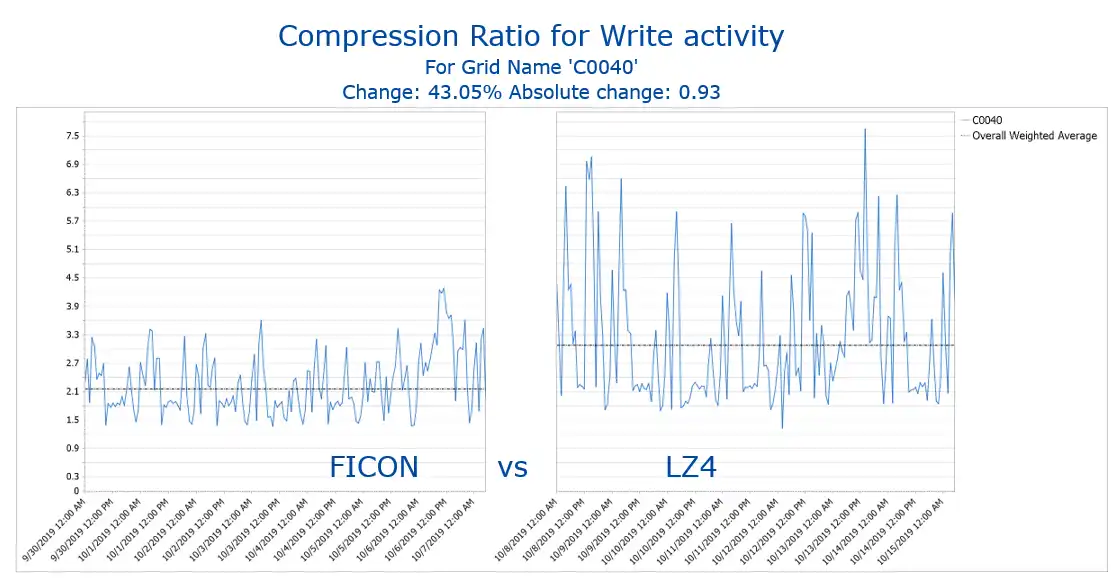
Figure 1: TS7700’s new compression algorithms
As you can see, the change in compression algorithms can have a dramatic effect:
- The average compression ratio increased from 2.15:1 with FICON to 3.08:1 with LZ4.
- 43% improvement in compression ratio
- Absolute change of 0.93
The absolute change of 0.93 results from average LZ4 ratio of 3.08 minus the 2.15 FICON ratio. This is a 43% improvement over 2.15 to 1. This one change affects the entire life cycle of the virtual volume and performance of the grid.
2) Increase Cache Effectiveness & Host Throughput
If you are using FICON compression, there is an opportunity to improve host throughput and increase the cache effectiveness. Figure 2 shows how LZ4 has a slight increase in performance while ZSTD may decrease throughput. Because of this, it is important to know your tape environment and decide which jobs would benefit more with less compression improvement and little change in throughput or would benefit more from higher compression and possibly lower throughput.
The results shown in Figure 2 were from testing in a lab environment, customer results will vary.
Image Source: IBM TS7700 – R4.1.2 Performance
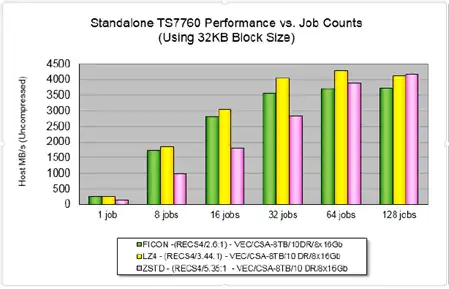
Image Source: IBM TS7700 – R4.1.2 Performance
Each customer environment is different and individual jobs and workloads will have different compression ratios and throughput values. Therefore, it is useful to be able to easily verify what type of compression each of your grids is using.
Figure 3 below shows which compression method is in use for each grid. Drilldowns are available to get cluster level information.
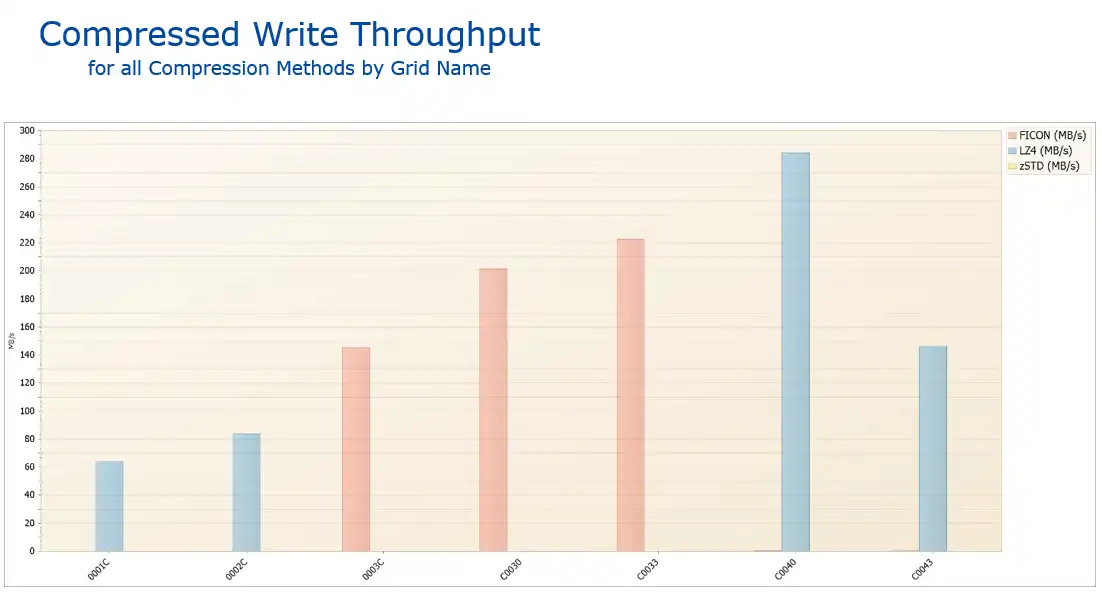
Figure 3: Compressed write throughput
Once you have identified which type of compression your grids are using, you can determine whether you want to use one of the newer methods.
3) Increase Your Effective Storage Capacity
Increasing the compression ratio increases the effective storage capacity of both the Tape Volume Cache (TVC) and the stacked volumes in the attached library. Figure 4 below shows how the TVC utilization decreases as newer volumes with better compression ratio are replacing older volumes in the grid.
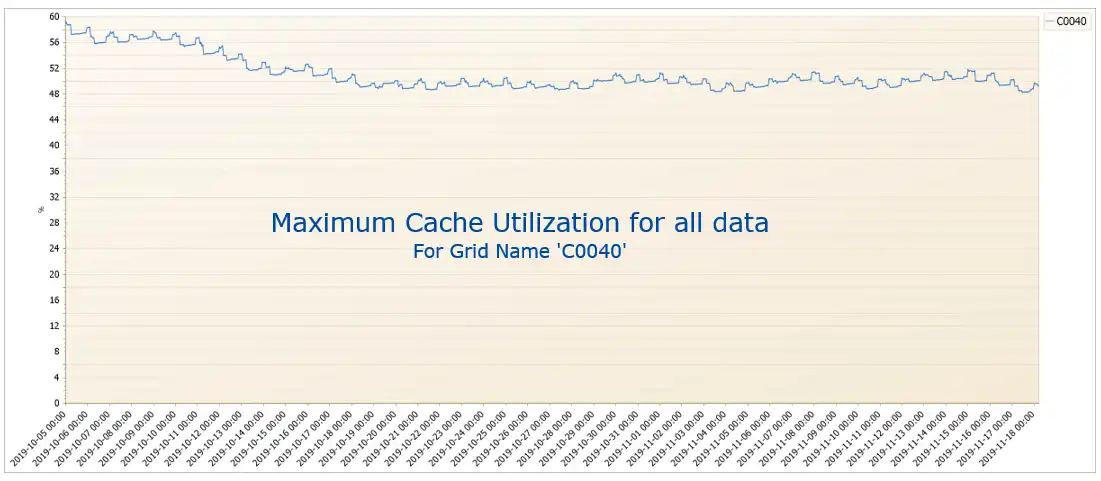
Figure 4: Maximum Cache Utilization for All Data
The effect on stacked volumes in library pools will show the same decrease in active data. Eventually as the old volumes are removed and become inactive data, reclaim will consolidate the stacked volumes.
Virtual volumes owned by volume stacking software like HSM must be rewritten from beginning of the volume to change to a different compression algorithm. Appended data must use the same algorithm that was used at the beginning of tape.
4) Less Data Replicated to other Clusters
When the compression ratio increases, less data is written to the cluster’s TVC. When this data is replicated to other clusters in the grid, the amount of outbound copy data will go down. As well as the inbound copy data for the receiving clusters and the overall network data traffic.
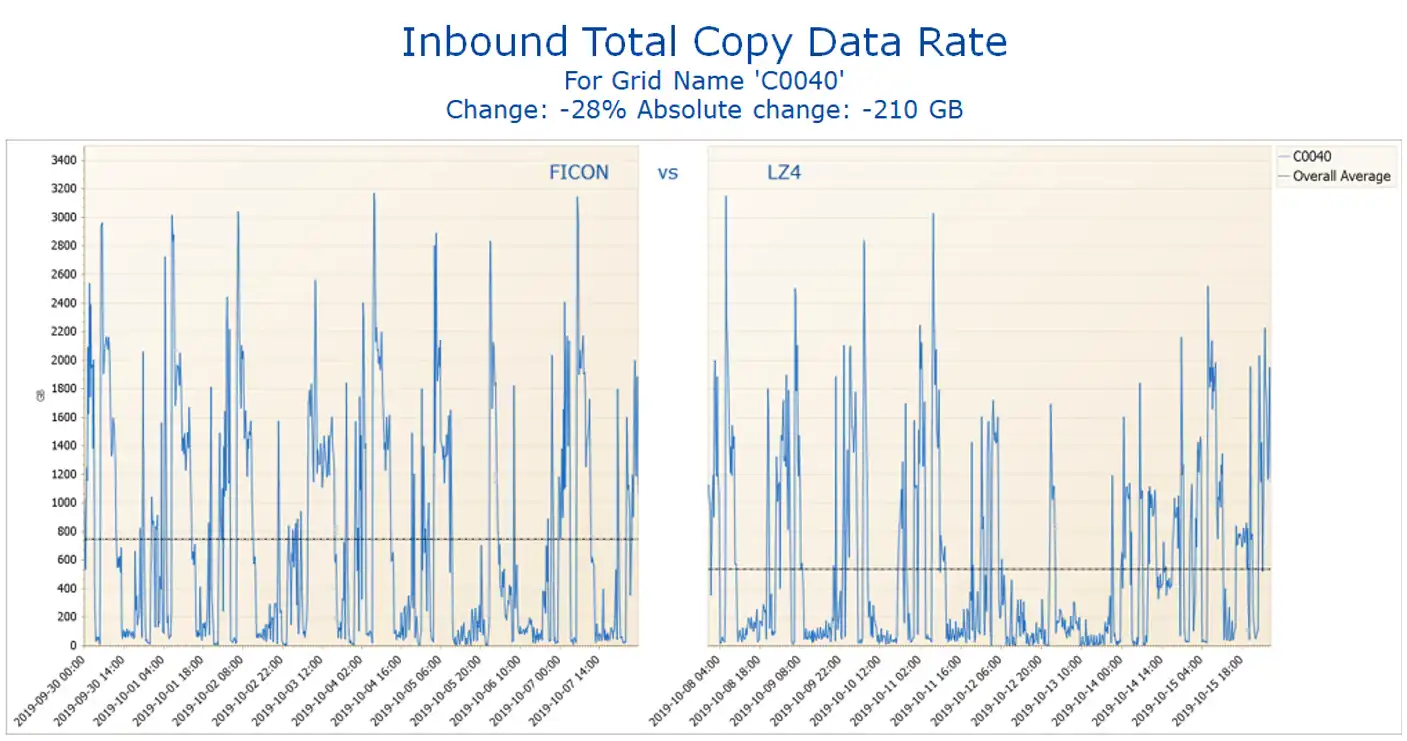
Figure 5: Inbound Total Copy Data Rate
Cost-Benefit Analysis of Implementing New TS7700 Compression
The cost of implementing this free stuff is TS7700 CPU utilization, and depending upon the chosen algorithm, it could change job performance. LZ4 may improve performance while ZSTD could make jobs run slower under certain circumstances.
The reward is better compression, which means less data stored, better cache efficiencies and improved copy performance.
As always, the exact nature of the compression ratios and performance impacts will vary based on your workloads and environment, but the benefits that LZ4 and ZSTD compression offer should not be ignored.
Of course, without the right visibility into your environment, it will be hard to see what (if any) the benefits these new compression algorithms pose. IntelliMagic Vision is an interactive, GUI-based solution that allows you to easily visualize the health and performance of your entire z/OS environment, seamlessly compare the before-and-after results of new changes, and eliminate the need for static reports or manual coding. IntelliMagic Vision produces the reports necessary to first show what is compression type is currently in use in your environment and reports the improvements of the newer compression ratio as you migrate.
Learn more or start a free trial here.
Using IntelliMagic Vision for TS7700 Performance Analysis
IntelliMagic Vision for TS7700 automatically compares the hardware views (via BVIR data) with the workload metrics, providing you with insight into how the standalone or gridded hardware is handling the work and replication between boxes.
This article's author
Share this blog
Related Resources
Challenging the Skills Gap – The Next Generation Mainframers | IntelliMagic zAcademy
Hear from these young mainframe professionals on why they chose this career path and why they reject the notion that mainframes are obsolete.
New to z/OS Performance? 10 Ways to Help Maintain Performance and Cost | IntelliMagic zAcademy
This webinar will delve into strategies for managing z/OS performance and costs. You'll gain insights into key metrics, learn how to identify bottlenecks, and discover tips for reducing costs.
What's New with IntelliMagic Vision for z/OS? 2024.2
February 26, 2024 | This month we've introduced changes to the presentation of Db2, CICS, and MQ variables from rates to counts, updates to Key Processor Configuration, and the inclusion of new report sets for CICS Transaction Event Counts.
Book a Demo or Connect With an Expert
Discuss your technical or sales-related questions with our mainframe experts today

 Merle Sadler
Merle Sadler